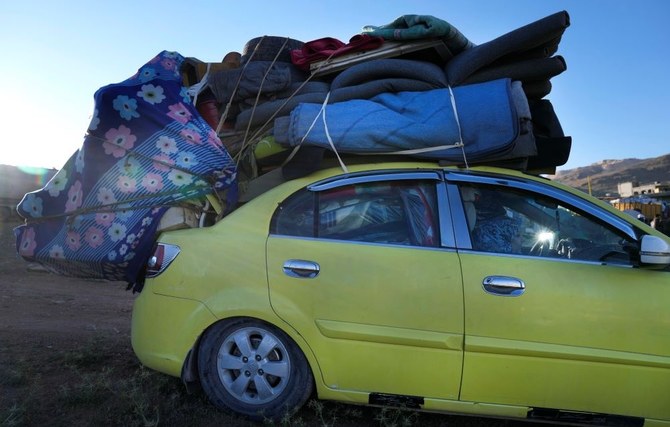
Iraq is unraveling and it could lead to civil war; one that is too complex for me to understand. What matters is not so much how these conflicts start as much as how they end and through what mediation. The principal actor is the enigmatic Muqtada Al-Sadr and the focus is on inter-Shiite rivalries for now. This is reminiscent of the War of Brothers between Amal and Hezbollah in late 1980s Lebanon and there are lessons that can be drawn from it. The final outcome is as important as the war in Ukraine in terms of its long-term impact both on Iraq and the region.
Iraq is not Lebanon and Lebanon is not Iraq. No matter how many times I repeat this to myself, I cannot help but make comparisons between the two. As a Lebanese, I sympathize and identify with the vocabulary used in the conflict — the same words and concepts are repeated in different accents. Code words such as “change” can mean different things to different people. Just like the Lebanese, Iraqis complain about militias, the corruption of the political class, the erosion of institutions, sectarianism, the division of spoils, foreign interference and the failure of other Arab states to help.
Iraq has also had elections, boycotts, paralyzed government, expatriate votes, a blocking third, assassinations without accountability and calls for national dialogue, all of which are too familiar for the Lebanese. What is certainly common to both Lebanon and Iraq is the loss of confidence in the political class and the quasi-total collapse of state services, with Iran being the most influential external actor.
What looked like a revolt led by the followers of Al-Sadr flared up into violence as he this week announced his withdrawal from politics. This was after his movement had won the most seats in last year’s elections, which was celebrated as a big blow to Iran’s candidates. The anti-Iranian “Tishreen” protesters, with their slogan “Iran out,” are another mainly Shiite movement. They are what you might call ordinary Iraqis with ordinary demands and had boycotted the elections. Although they are not armed, their influence and regional connections to other anti-Islamic Revolutionary Guard Corps protests in Lebanon and in Iran itself should not be underestimated.
Until this week, it all seemed like a severe political crisis being handled within a democratic framework. Today, it resembles America’s Jan. 6 on steroids, with the storming of the Green Zone — the seat of government and parliament — and other militias claiming to be prepared to defend it. It looks like an internal conflict within the Shiite community of Iraq, with diverse factions being pro or anti-Iran’s role in the country. The state looks helpless and its institutions weak.
There are too many issues to digest in the last two decades of Iraqi history since the US invasion and the growth of Iranian influence. It is also impossible to predict the consequences of the Iranian factions of the Popular Mobilization Units like Kata’ib Hezbollah entering the scene and clashing with the Sadrists and the Tishreen protesters. The conflict could also spread beyond a mere inter-Shiite civil war.
Al-Sadr remains the principal figure. His family has deep connections with Iran and much to be grateful to the mullahs for. However, he is now seen as a nationalist critical of Iran’s role. In the long run, there will be mediation, winners and losers, but what matters is how the conflict is resolved and which regional power will emerge as having gained more influence as a result.
What matters is how the conflict is resolved and which regional power will emerge as having gained more influence as a result.
Nadim Shehadi
The experience of intra-Shiite conflict in Lebanon may help illustrate the dynamics of various local and regional players and give it perspective. Between April 1988 and November 1990, there was an intense conflict that erupted into clashes between Amal and Hezbollah, the two main Shiite parties in Lebanon. The most violent battles fought by the Shiite factions in the Lebanese civil war were against each other. The same goes for the clashes between Christian militias and Palestinian factions at around the same time.
Thousands were killed or injured in the War of Brothers. It started mainly as a battle over territory, with Hezbollah accused of kidnapping UN employees and later Col. William Higgins, an American UN observer, in Amal territory while on his way back from meeting with Amal officials. Battles spread all over the country, from Beirut to the south and the Beqaa. The rivalry deepened, bringing all sorts of problems to the surface within the community. At the time, Nabih Berri, the head of Amal, described Hezbollah as Dracula because it lived on blood.
Peace was eventually restored through an agreement brokered by Iran and Syria, which were effectively the sponsors of both parties. Saudi Arabia was the main broker of the Taif Agreement in 1989. This was an agreement among all the Lebanese factions that brought an end to the 15-year civil war.
The settlement included a pact that combined the political activities of the two parties and gave birth to what became known as the Shiite duo of Amal and Hezbollah. Together they established an almost absolute hegemony over the community. They put forward joint lists in elections that effectively gave them full control of the 27 members of parliament that represent the community in the assembly. That gave them an informal veto power: In a system based on power-sharing, it would be impossible to make any major decisions while excluding the representatives of a major community. Their combined vote also allowed them to guarantee the electoral success of any non-Shiite candidates on their lists.
Later, in 2006, their electoral power allowed them to form a pact with the Free Patriotic Movement of Gen. Michel Aoun. The veto power of the duo was consolidated in the Doha Agreement of 2008, which came after an 18-month occupation of central Beirut and an attack on the city by Hezbollah’s black-shirted militiamen. Armed with that veto power, Hezbollah and its allies could paralyze the country for months on end.
In 2016, after 29 months of paralysis with no parliamentary elections, no government and no president, the duo was able to secure the election of its ally Aoun to the presidency, giving it almost complete control over the state in Lebanon.
Thus, Iran’s de facto control of Lebanon was systematically achieved through a step-by-step process using a combination of violence, assassinations, paralysis and the building of alliances. There are also similarities with Iran, where the IRGC gained control by liquidating all other elements of the 1979 revolution.
The moral of the story is that it may be too early to celebrate the demise of Iranian power in Iraq because of anti-Iranian slogans by protesters and demonstrators. If Tehran can reconcile with Al-Sadr and create a situation similar to the Shiite duo between him and the PMU, it can regain any of the power it may have lost in the last couple of years. The possible mediators for the intra-Shiite conflict are Grand Ayatollah Ali Al-Sistani, who is based in the holy city of Najaf, and the leaders of the PMU loyal to Iran.
Regional rivalries are not only about the conduct of war, but about who mediates the peace and on what terms.
• Nadim Shehadi is a Lebanese economist.
Twitter: @Confusezeus
Disclaimer: Views expressed by writers in this section are their own and do not necessarily reflect Arab News" point of view












